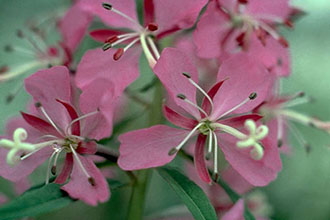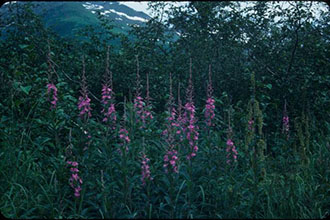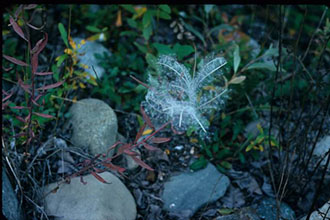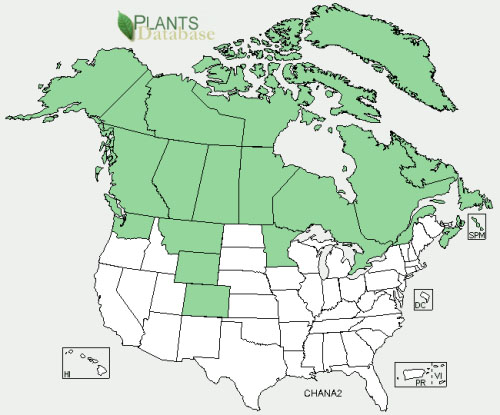Taxonomy: Kingdom - Plantae (plants). Subkingdom - Tracheobionta (vascular plants). Superdivsion - Spermatophyta (seed plants). Division - Magnoliophyta (flowering plants). Class - Magnoliopsida (dicotyledons). Subclass - Rosidae. Order - Myrtales. Family - Onagraceae (evening primrose). Genus - Chamerion Raf. ex Holub (fireweed). Species - Chamerion angustifolium (L.)Holub (fireweed).
Ecology: Fireweed is an important colonizer following vegetation disturbances in temperate climates worldwide. Although the role of fireweed as an early seral species does not change, the length of time fireweed populations are present varies among ecosystems. Fireweed enters a disturbed community and rapidly becomes abundant. Fireweed colonizes recent alluvial deposits. It acts as a pioneer species on glacial moraines, establishing with willows (Salix spp.) on exposed gravel, sand, and silt bars. In succession on delta swamps in Michigan, the grass stage with bluejoint reedgrass and fireweed follows the sedge-mat stage. The grass stage is succeeded by a shrub stage. Fireweed is an indicator of a mid-seral stage of succession in the herb layer of the grand fir/Rocky mountain maple (Abies grandis/Acer glabrum) habitat type in central Idaho. It is an indicator of early seral stages in grand fir/blue huckleberry (Vaccinium globulare) habitat types.



